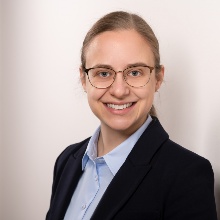Melanie Lipp, a doctoral researcher at the Department of Hydromechanics and Modelling of Hydrosystems and SFB 1313 associate member (Internal Research Project I-07), will defend her dissertation:
Title: "Capturing local details in fluid-flow simulations: options, challenges and applications using marker-and-cell schemes"
Date: 14 June 2024
Time: 2 pm CET
Venue: Multi Media Lab (MML), U1.003, Pfaffenwaldring 61, 70569 Stuttgart, Campus Vaihingen.
Abstract
Complex local flow structures appear in a wide range of free-flow systems, e.g. vortices build after obstacles. For understanding and predicting numerous processes, it is important to capture local details in free fluid flow, which is the focus of this work. Particularly, we are interested in local flow structures in free flow coupled to porous-medium flow. A better resolution of local structures in free flow can be achieved by refining computational grids, which is studied in this thesis.
Particularly, we focus on finite-volume/finite-difference methods for the two-dimensional Navier-Stokes equations with constant density and constant viscosity, using the marker-and-cell method (pressures in cell centers, velocities on cell faces) and rectangular control volumes.
There exists a variety of methods, with a range of characteristics, which can be used to refine computational grids.
The first objective of this work was to develop for many different available approaches one common way of description of a class of methods within our focus and to display their similarities and differences. The second objective was to gain insight and in-detail understanding of the local-refinement-methods' behavior by examining one chosen method before numerical solution, i.e. by examining local truncation errors. The third objective was to gain further understanding of the local-refinement-methods' behavior as well as display examples, in which the chosen method is beneficial when neglecting computational-efficiency issues, by examining our chosen method after numerical solution, i.e. by examining actual numerical solutions.


